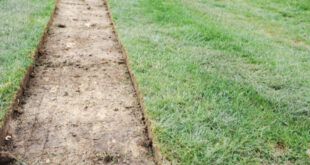Sacramento-area residents reduced their water use by 17 percent in October compared to the same month in 2020, according to an analysis by the Regional Water Authority (RWA), which represents 20 water providers serving 2 million people in the greater Sacramento region. The findings come from reviewing preliminary October water use data submitted to RWA and the State Water Resources Control Board (State Water Board).
October reductions are in addition to a 13 percent decrease in regional water use since the last drought. Some water providers, such as the City of Roseville, surpassed the regional average, conserving over 20 percent, demonstrating the City’s increased focus on conservation messaging, water waste patrols and other actions to help their customers reduce water use.
“The significant decrease in October demonstrates just how much weather and landscape water use impact the region’s overall water use patterns as people turned off their sprinkler systems with the rain,” said RWA Water Efficiency Program Manager Amy Talbot. “Some of this savings will become permanent as water providers, such as the City of Sacramento, continue to experience a surge in rebate applications for replacing lawn with low-water landscaping.”
In addition to conservation, water providers made operational shifts to contend with the ongoing drought. Over the past several months, for example, Sacramento-area water providers have shifted to using 34 percent more groundwater compared to previous years, according to RWA’s preliminary estimates.
“Conservation is critical but not the only drought response underway,” said RWA Executive Director Jim Peifer. “Operational adjustments, such as using more groundwater, also reduce the region’s reliance on Folsom Lake and the Lower American River for drinking water, leave more water for the environment, but are far less dependent on external factors such as weather.”
The dramatic swings in precipitation this year are a glimpse at what’s to come with climate change, Peifer added, “and the future is projected to bring more of the same.” The region’s water providers have developed a comprehensive water resilience portfolio to address drought and climate change called WaterFuture. You can learn more about it at rwah2o.org/WaterFuture.
RWA and local water providers are asking customers to continue conserving water during the fall and winter months.
“We know that customers are responding to drought, but we need to work together to do more,” Talbot said. “Keep up the good work by reducing landscape watering significantly and turning sprinklers off during rain, while continuing to water trees.”
Water-wise tips, information about rebates and details about watering guidelines for each water provider are available at BeWaterSmart.info.
 California Water News Daily Your Source For Water News in California
California Water News Daily Your Source For Water News in California


